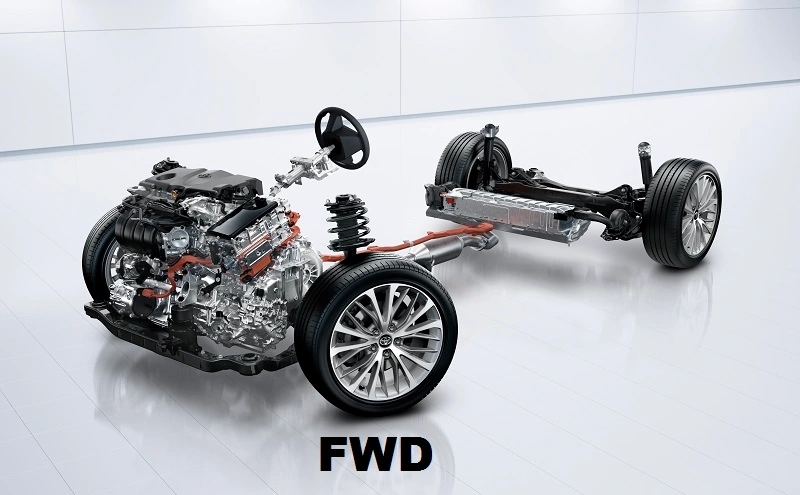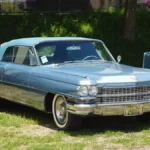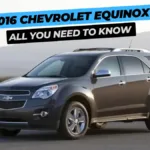Perhaps the most crucial decision one must make upon buying a car is a choice between All Wheel Drive and Front Wheel Drive. Both of these drivetrain systems offer great advantages in various areas but, at the very same time, compromise something for everyday driving. In this article, we are going to break down all the differences between AWD and FWD and their pros and cons, which will help us decide what might be best suited to your lifestyle.
What is All Wheel Drive (AWD)?

This is actually just another way of referring to a power distribution system to all four wheels of the car. Its primary application is to enhance grip and stability, especially when the road may be slippery or uneven.
How AWD Works
An AWD system can automatically adjust power distribution between the front and rear wheels. So in case of slipping for any set of wheels, the system adjusts power by sending it to the better grip wheels. The process happens without the intervention of a driver and there is no need to shift the lever manually.
What is Front Wheel Drive (FWD)?

Front-Wheel Drive (FWD) is one of the most common drivetrain systems, especially in smaller vehicles. In an FWD system, the engine powers the front wheels exclusively.
How FWD Works
FWD vehicles use the front wheels to pull the vehicle forward, with the rear wheels following along. This system is lighter and simpler than AWD, making it more fuel-efficient.
Key Differences Between AWD and FWD
However, what greatly differentiates AWD from FWD is how the vehicle powers its wheels: AWD sends power to all four wheels of the vehicle, while in contrast a FWD can only power the front two. Yet these simple differences branch into an entire repertoire of performance and efficiency distinctions that can have greatly pivotal implications for your driving experience.
Advantages of AWD
Better Traction in Different Weather Conditions
Some of the advantages of AWD include the provision of superior traction on the roads, especially when it is slippery, snowy, or iced. Therefore, it normally gathers information on the road and distributes power to the point needed most as long as the vehicle would remain stable even if staying on slippery roads.
Enhanced Off-Road Capabilities
That said, AWD for the hardcore off-road enthusiast is not a bad option. Not being able to compete with the full 4×4 in capability, yet most vehicles can utilise dirt roads, gravel and, at times, light off-roading without too much of a stir.
Advantages of FWD
Fuel Efficiency and Cost Savings
Since FWD is less complex and considerably lighter than AWD, they generally burn less fuel. Now in a nutshell, this may mean a significant saving over time for the commuter who spends most of his time in cities or highways.
Simpler Mechanics, Lower Maintenance
With fewer parts involved, FWD systems tend to be more reliable and less costly to maintain. FWD vehicles are often less expensive upfront as well, making them a more budget-friendly option.
Disadvantages of AWD
Higher Cost and Complexity
AWD systems are more complex, which means higher upfront costs for vehicles equipped with AWD. The added technology can also result in more expensive repairs over time.
Lower Fuel Efficiency
Due to the added weight and mechanical complexity, AWD vehicles typically consume more fuel than their FWD counterparts. If fuel efficiency is a top priority, FWD might be the better option.
Disadvantages of FWD
Limited Performance in Challenging Conditions
Although FWD performs very well for most driving conditions, it fails in harsh weathering conditions such as heavy snow or rocky terrain. Because the power is not delivered to the rear wheels, FWD will lose traction very easily right when the road gets tough.
Towing and Off-Road Limitations
Typically, FWD rigs are neither towing-prepared trailers nor serious off-road capable. If you spend a lot of time running around, hauling big trailers, or leaving the pavement regularly, chances are you’ll need an AWD or even a dedicated 4×4 system.
All Wheel Drive VS Front Wheel Drive In Different Driving Scenarios
Urban Commuting
Though, with normal use on an urban street, FWD is the better choice, since its lighter weight and better economy will make it the preferred choice for stop-and-go traffic and you probably won’t need the increased traction that AWD delivers.
Rural and Off-Road Driving
It may cost extra dollars if it is a rural location with dirt roads, or if it really gets very harsh during the winter months. The features would impact navigation during trying times.
Performance and Towing
For towing and performance, AWD is the better choice. AWD systems distribute power more effectively, giving you greater control when hauling heavy loads or driving on rough terrain.
Safety Considerations: All Wheel Drive vs Front Wheel Drive
Maybe the primary consideration when determining between AWD and FWD should be safety. Both are good for normal conditions of driving, but the added security is with AWD if the bad weather or off-road condition becomes the factor. On the flip side, apart from that, Traction control and Anti-lock brakes are also present in any of the drives and can be safe if proper technology is used.
Fuel Economy Comparison
AWD tends to be more fuel unfriendly than FWD, given that it is basically heavier and also covers more complex drivetrain systems. However, in long-term savings on fuel, drivers would appreciate FWD.
Cost of Ownership
In terms of overall cost, FWD vehicles usually come out ahead. Not only are they cheaper to purchase, but they also tend to require less maintenance over their lifetime. Meanwhile, AWD vehicles may have higher repair and maintenance costs due to the complexity of the system.
Which is Better for You: All Wheel Drive vs Front Wheel Drive?
A final decision between AWD and FWD will have to depend upon the kind of driving you do. Should you spend a lot of time in bad weather or perhaps off-road, then AWD will suit you; but if you’re prone to saving on fuel, low maintenance cost, and also car use within cities, then FWD suits you the best.
Conclusion
AWD and FWD both have their benefits and drawbacks, so one should choose only according to personal preferences and driving conditions. For instance, though giving better traction and versatility, the opposite lies in FWD, which is quite efficient and less costly. Consider your needs and make the right choice for your next vehicle.
Frequently Asked Questions (FAQs)
1. Is AWD always better than FWD in snow?
AWD provides better traction in snowy conditions, but FWD with good winter tires can also perform well in light snow.
2. Does AWD use more gas than FWD?
Yes, AWD vehicles typically use more gas due to the added weight and complexity of the drivetrain.
3. Is AWD necessary for city driving?
For most city driving scenarios, AWD is not necessary. FWD usually provides adequate performance in urban environments.
4. Can I take an AWD vehicle off-road?
While AWD can handle light off-road conditions, it’s not as capable as a 4×4 system designed specifically for rough terrains.
5. Why are FWD cars cheaper?
FWD systems are simpler, lighter, and less expensive to manufacture, making FWD vehicles generally more affordable.
Also Read : The 2 Port Injection Manifold: A Guide for Enthusiasts







